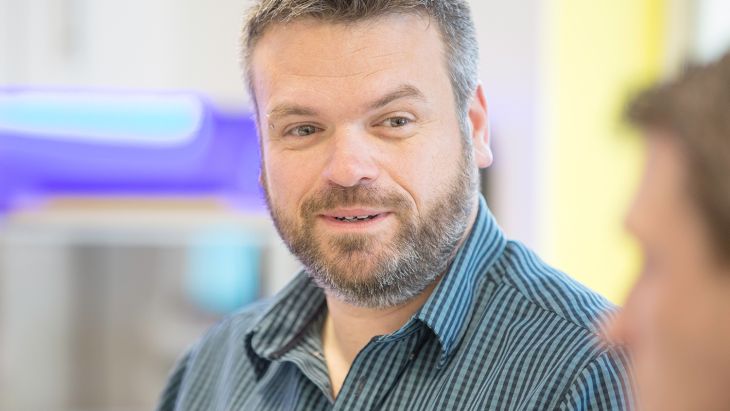The ‘finishing’ touches

How do you effectively deal with the completion of a project?
Do you breeze up to the finish line without breaking a sweat, or crash into a maelstrom of loose-ends? If you’re like me, it’s often the latter.
At Brightec, every colleague takes the Gallup Strengthsfinder survey, and from this we get a feel for our respective strengths and weaknesses. I did not score highly as a ‘finisher’ and because of this, I have a support network in place when approaching the end of a project. This works well for both the task at hand, and my stress levels.
But sitting on our laurels is not the Brightec way, and I’d like to share some of the behavioural changes I am making to positively impact my own finishing process.
Don’t make notes, create tasks
Remember that phone call, or meeting when you said you said “yeah, I can do that” and made a quick note to take action? Probably my worst habit is that I write things in a linear fashion in my notebook. As time goes by, that call to action falls into obscurity and right near the end of the project, it either pops into my head, or someone asks if it has been done yet.
This is still a work in progress, but I believe the best discipline here is to immediately add your note as a fresh task in the backlog, or schedule it in your calendar. It can always be consolidated into another task later, but until that time we remove the danger of it getting lost..
A loose end becomes a noose
It’s always nice to reap the reward of a completed task. You slide it across the Kanban board (in our case to the Peer Review column) and grab the next chunk of work. Progress has been made and you feel accomplished. Of course there is always the chance that your work will need amendments, but essentially it can be ticked off.
Your reviewer spotted a couple of TO DOs but approves the pull request because everything is well documented and makes sense. From that moment, a loose end is born and allowed to fester quietly within the project. I’m not saying that TO DOs are bad, sometimes they are completely viable pointers to future tasks, just be sure you are not creating a loose end as a means of escape from the current task.
Loose ends quickly mount up in a project and left unchecked will cause you a great deal of stress. Make a rule that every loose end must have a task created for it and time estimated against it. That way, you can stay in control and won’t be faced with an unknown quantity at a crucial stage in the game.
Starting is cheap - finishing is gold
When I look back over my life, the number of projects I started far outweighs the ones I finished, which is a shame because every one of them began with the best of intentions. So why are they now cluttering up the wayside? It is down to the very enthusiasm that brought them into being. You see, I would be halfway through a project when a fresh idea would strike and before long, I was more emotionally invested in the new idea.
More recently, I’ve been working on a number of creative projects with different friends and find that I become easily distracted as new opportunities present themselves. That same enthusiasm tugs at me, shifting my attention away from what I am currently working on.
The very real danger here is that it can strain relationships and in a professional capacity, those strained relationships can lose you clients.
Fortunately I am not involved in project management, so this behaviour doesn’t overtly affect Brightec, but as we know, everything is connected, and what impacts my personal life will impact my work in some capacity.
At Brightec, we have adopted the “Oversubscribed” model, which means not taking on more work than we can effectively deal with and, most importantly, saying “no” with confidence.
With this in mind, being more aware of my limits is key, and I am learning to say “no” more often, to avoid overloading myself with ‘starts’ that I may struggle to finish.
Let it go
I’m not about to burst into song.
I’m referring to the disappointment that a project you’re enjoying is drawing to a close. This is possibly linked to the notion of perfectionism; the constant tweaking and refactoring just to hold off the ‘goodbye’.
I’m a firm believer in fit and finish, giving your project the ‘once-over’ before you present or release. It is a healthy sign of professionalism, but when you find yourself constantly tweaking things which makes little or no difference, it is probably time to let the project go.
People are remembered for what they finish, not what they start (unless you’re talking war, of course).
In Summary (TLDR)
This is neither an exhaustive or prescriptive list, but instead a set of observations and changes I have started to implement in my own creative practices. It’s early days, but already I am noticing an improvement in my workflow.
Make sure the notes you take are actioned, by organising yourself as you take them.
Tie up loose ends as you go, or you will regret it later.
Get used to saying “no” if you don’t have the time or resources to take a new project on.
Don’t hide behind ‘perfectionism’ - let a project go and move on.
Looking for something else?
Search over 450 blog posts from our team
Want to hear more?
Subscribe to our monthly digest of blogs to stay in the loop and come with us on our journey to make things better!
